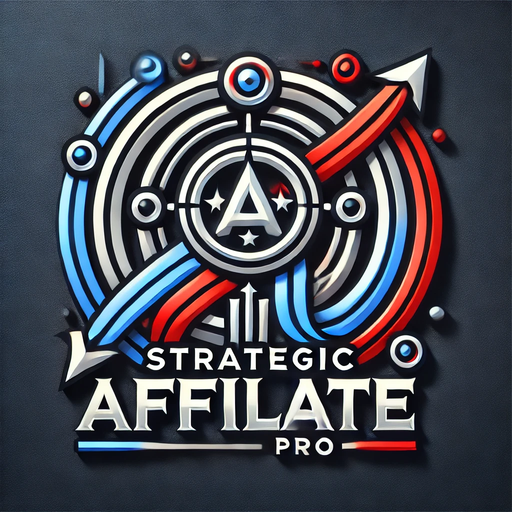When you’re starting a blog or aiming to level up your existing one, learning how to create a content plan for a blog is essential.
A content plan serves as a roadmap that ensures your blog stays consistent, relevant, and valuable to your audience. Without one, even the best writers can struggle to maintain quality and cohesion.
In this guide, we’ll cover the six key steps to creating a content plan, provide examples, and show you how to structure blog content for maximum impact.
Why You Need a Content Plan
A content plan is like the foundation of a house. It holds everything together and ensures each part works toward the same goal. It prevents you from falling into the trap of scrambling for ideas last minute or posting content that doesn’t align with your brand. In short, a content plan provides clarity, consistency, and measurable goals, which can help you grow your blog’s reach and authority.
Whether you’re managing a personal blog or running a business, a structured plan helps you create valuable, targeted content that resonates with your audience. Now, let’s dive into the practical steps on how to create a content plan for your blog.
What is a Content Plan Example?
Before going into the detailed steps, it’s helpful to understand what a content plan might look like. Here’s an example:
Blog Name: Healthy Living Hub
Target Audience: Health-conscious adults between 25-45, primarily focused on diet, fitness, and mental well-being.
Content Plan Overview:
Goals: Increase blog traffic by 20% in 3 months, gain 500 new email subscribers, and increase user engagement on social media.
Primary Content Categories: Healthy recipes, fitness routines, mental wellness tips.
Posting Frequency: 3 times a week (Monday, Wednesday, Friday).
Monthly Themes:
January: New Year, New You – Kickstart Your Health Goals
February: Heart Health – Recipes & Workouts for a Stronger Heart
March: Mindfulness and Stress Reduction Tips
KPIs: Blog traffic, time spent on the site, social shares, comments, and email sign-ups.
Specific Blog Post Ideas:
January 1: “10 Simple Healthy Habits to Start This Year”
January 3: “Easy Vegan Breakfast Ideas for Busy Mornings”
As you can see, this is a simple but highly organized content plan that helps guide the blog’s strategy over the months.
Six Steps for Creating a Content Plan
Creating a content plan may seem daunting, but it can be broken down into six straightforward steps. Let’s take a closer look:
1. Define Your Blog’s Purpose and Goals
Before you start brainstorming ideas or drafting content, it’s crucial to define your blog’s purpose. Ask yourself:
- Why am I starting this blog?
- What do I want my readers to take away from my content?
- How will this blog serve my overall business or personal goals?
Your goals should be measurable. For instance, if your objective is to increase your email subscribers, set a specific number you’d like to achieve by a certain date. If your goal is to establish yourself as an authority in your niche, you could aim for higher engagement metrics like social shares or comments.
2. Identify Your Target Audience
Knowing who your target audience is will help you create content that is relevant and valuable to them. Develop a persona or profile for your ideal reader. This can include:
- Demographics (age, gender, income, occupation)
- Interests and pain points
- Their needs or desires in relation to your blog topic
Understanding your audience allows you to tailor your content, making it more likely to resonate with your readers and address their needs.
3. Conduct Topic Research and Ideation
Once you’ve clarified your goals and audience, it’s time to brainstorm ideas. Use tools like Google Trends, AnswerThePublic, or social media platforms to see what’s trending in your niche. You can also look at competitors to identify gaps in their content that you can fill.
Create a list of potential blog post topics, ensuring they align with your blog’s goals and audience. Remember, a variety of post types—how-to guides, opinion pieces, listicles, interviews—can keep your content engaging.
4. Create a Content Calendar
A content calendar is a key component of any successful content plan. It outlines when and what you’ll post and helps you maintain consistency. Here’s how to create one:
- Determine frequency: How often will you post? Daily? Weekly? Bi-weekly?
- Plan ahead: Decide on post topics at least one month in advance. This way, you’re never scrambling for ideas last minute.
- Include all channels: If you’re promoting your blog on social media or via email newsletters, plan those activities in your content calendar too.
Platforms like Google Calendar, Trello, or CoSchedule can help you manage your schedule effectively.

5. Write and Optimize Content
Now that you have a plan in place, it’s time to start creating the content. Follow these guidelines for blog writing:
- Quality over quantity: Focus on producing well-researched, informative, and engaging content.
- SEO optimization: Use relevant keywords (like “how to create a content plan for a blog”) naturally in your posts. Include meta descriptions, use proper headings, and optimize images with alt text.
- Engage with your audience: Ask questions, encourage comments, and provide value that fosters connection.
Once you’ve written the post, optimize it for search engines to increase your chances of being found online. This can include optimizing for keywords, using internal links, and ensuring that your post has a compelling meta description.
6. Measure, Analyze, and Adjust
The final step in creating a content plan is to measure its success. Use tools like Google Analytics to track metrics such as:
- Page views
- Bounce rate
- Time on page
- Conversion rates (e.g., email sign-ups)
This will help you see which types of posts resonate with your audience and which need improvement. Don’t hesitate to adjust your content plan based on this data to ensure you’re meeting your goals.
How Do You Structure a Blog Content?
Now that you have your content plan in place, let’s talk about structuring individual blog posts for maximum readability and engagement. Here’s a simple framework you can follow:
1. Catchy Title
Your title should be attention-grabbing and include relevant keywords. Make sure it piques interest while clearly indicating what the post will cover.
2. Introduction
Your introduction should hook readers immediately. Use a question, anecdote, or shocking statistic to draw them in. Clearly state what the reader will gain from the post and set the tone for the rest of the content.
3. Subheadings and Sections
Breaking your content into smaller, digestible sections with subheadings makes it easier to read. Subheadings also help with SEO, making it easier for search engines to understand your content.
4. Body
The body should contain well-researched, valuable information that delivers on the promise of the title. Use bullet points, lists, or quotes to keep it engaging. Make sure your paragraphs are short and your sentences clear.
5. Conclusion
Summarize the key points and offer a clear call-to-action (CTA). This could be encouraging the reader to leave a comment, subscribe to your newsletter, or follow you on social media.
6. Visuals
Use images, infographics, or videos to break up the text and add value to your content. Visuals not only make the post more engaging but also improve SEO and shareability.
Conclusion
Learning how to create a content plan for a blog is essential for building a successful and sustainable blog. By following the six steps outlined above—defining your goals, understanding your audience, conducting topic research, building a content calendar, writing and optimizing content, and regularly analyzing your results—you can create a plan that not only saves time but also grows your blog effectively.
A well-thought-out content plan allows you to stay consistent, relevant, and aligned with your blogging goals. Start planning today, and watch your blog reach new heights!
Enjoyed this article? Let’s continue the conversation on LinkedIn.


Creating a content plan for my blog was a game-changer. Before, I’d always find myself scrambling for ideas at the last minute, which was super stressful. Once I started mapping out my goals and organizing a content calendar, everything felt so much more manageable. Plus, I noticed my readers were more engaged because I was consistent. My advice? Keep it simple and leave room for creativity—it’s fun to mix in fresh ideas along the way!
Your experience is so relatable, and I completely agree—a content plan can truly be a game-changer! Scrambling for ideas last minute not only adds stress but can also impact the quality of the content. Mapping out your goals and using a content calendar is such a smart move—it brings clarity and consistency to your efforts. I love your advice about keeping it simple and leaving room for creativity. That balance between planning and spontaneity is key to staying inspired while delivering value to readers. Thanks for sharing—this is such a great tip for anyone building a blog!
Hi Herman –
This article is fantastic. Whether you’re a novice blogger or have experience, having a content plan is important. Essentially, it enables you to organize your ideas, goals, and future themes to ensure that your blog remains consistent. Every so often, I have faced days when I have a lot of obligations or deadlines.
With a content plan and calendar, I can quickly review my blog ideas/themes then begin writing.
Thank you so much for your thoughtful comment! I completely agree—having a content plan and calendar truly makes a world of difference, especially during those busy times when obligations and deadlines pile up. It’s great to hear that you’ve found value in organizing your ideas and themes in advance. Consistency is indeed key to successful blogging, and a solid plan helps to keep everything on track. Wishing you continued success with your blog! 😊